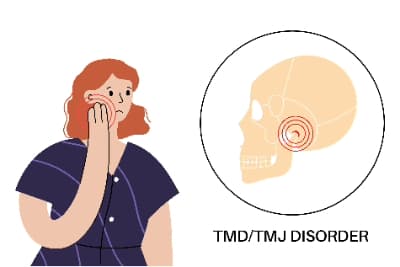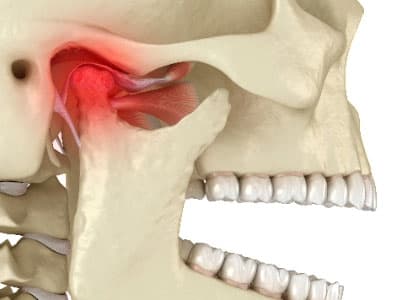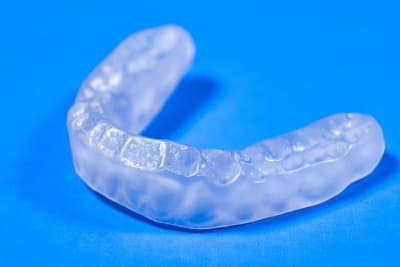9 Best Exercises for Temporomandibular Joint (TMJ) Pain Relief
The temporomandibular joint (TMJ) is one of the most important joints in your body. It connects the lower jaw to the skull and allows you range of motion to move your jaw muscles for talking, eating, and other activities. Unfortunately, TMJ pain is a medical condition that can be common and difficult to treat. Between 5% and 12%1 of the general adult population have some form of TMJ disorder. Fortunately, several exercises can help relieve TMJ pain. Here are nine of the best exercises for TMJ pain relief.

#1 Goldfish exercises (partial opening)
Goldfish exercises (partial opening) are effective for relieving TMJ pain. This exercise involves partially opening and closing the mouth in a motion similar to the way a goldfish opens and closes its mouth
This exercise aims to increase range of motion flexibility and decrease temporomandibular joint stiffness (TMJ). It also helps relax the muscles around the jaw joints, making it easier to move the jaw.
#2 Relaxed jaw exercise
Relaxed jaw exercise is one of the best exercises for pain relief for the temporomandibular joint (TMJ). This exercise involves gently and slowly opening and closing your mouth while keeping your teeth apart and tongue on the roof of your mouth, allowing the jaw to relax. Keep the muscles around your jaw relaxed throughout this exercise. This focus helps reduce tension and tightness in the area, thus providing relief from TMJ.
#3 Goldfish exercises (full opening)
Goldfish exercises (full-opening exercises) are one of the best ways to relieve temporomandibular joint pain (TMJ). The goal of these exercises is to open your mouth as far as possible while keeping your tongue on the roof of your mouth and the muscles around the joint relaxed. This exercise will help to stretch and strengthen the muscles that support your jaw, reducing tension and pain in your TMJ.
#4 Chin tucks
Chin tucks are a simple exercise that can help to relieve temporomandibular joint (TMJ) pain. This exercise involves tucking your chin toward your chest while keeping your neck and head straight. Hold this position for several seconds before slowly releasing it and returning to the starting position. This exercise can improve posture and reduce tension in the jaw muscles to relieve TMJ pain.
#5 Resisted opening of the mouth
Resisted opening of the mouth is an excellent exercise for helping to relieve temporomandibular joint (TMJ) pain. It helps to strengthen the jaw and face muscles, which can help reduce tension in the TMJ and alleviate pain. To perform this exercise, start by sitting or standing with your head and neck in a neutral position. Place your index fingers under your chin and gently try to open your mouth. Your fingers should resist the motion, allowing you to feel the muscles of your jaw and face working.
#6 Resisted closing of the mouth
Resisted closing of the mouth is a great exercise to help relieve pain associated with temporomandibular joint (TMJ) disorder. Do this exercise using a resistance device specifically designed for this purpose. The goal is to strengthen the muscles that open and close your jaw, reducing jaw and facial pain.
Place the resistance device around your lower front teeth to do this exercise, and gently try to close your mouth. You should feel a slight tension as your muscles work against the resistance.
#7 Side-to-side jaw movement
Side-to-side jaw movement is another great exercise for relieving Temporomandibular Joint (TMJ) pain. It works by stretching the muscles that support the TMJ, which helps to improve joint mobility and reduce discomfort. You can do this exercise lying down or sitting up.
To start, open your mouth slightly and gently move your jaw from side to side. Focus on keeping your teeth slightly apart and ensure slow and smooth motion.
#8 Forward jaw movement
Forward jaw movement is an exercise that can help relieve pain in the temporomandibular joint (TMJ). This exercise helps to reduce tension and tightness around the TMJ by stretching out the muscles. To perform this exercise, start by sitting or standing comfortably with your head facing forward. Slightly open your mouth and shift your lower teeth forward in front of your upper teeth. Hold this position for 10 seconds and slowly return.
#9 Other ways to manage your TMJ pain

TMJ pain can be pretty debilitating, and many people turn to exercise to reduce their discomfort. However, other ways to manage your TMJ pain don’t involve physical activity.
One of the most important things you can do to manage your TMJ pain is to reduce stress levels. Stress is connected to increased muscle tension in the jaw, leading to pain and discomfort. Relaxing and managing stress levels can help reduce your TMJ pain. Other ways to manage your TMJ pain include:
- Applying an ice pack/cold compress or heat pad to your TMJ.
- Avoiding hard and chewy foods.
- Practicing good posture.
It is also essential to see a doctor if you are experiencing chronic or severe pain, as other treatments may help.
Nonsurgical TMJ treatments
TMJ (temporomandibular joint) pain can be debilitating and hard to manage. Fortunately, there are a variety of nonsurgical treatments that may help reduce or relieve your TMJ pain. These conservative treatments range from lifestyle changes and self-care measures to physical therapy, medications, and other alternative therapies.
- Lifestyle Changes: Making simple adjustments in your everyday life, such as choosing soft foods and avoiding hard and chewy foods, practicing good posture, and reducing stress levels, can help relieve TMJ pain.
- Self-Care Measures: Exercises specifically designed for the TMJ, such as resisted opening and closing of the mouth, side-to-side jaw movement, and forward jaw movement, can help relieve tension in the joint and ease discomfort. Applying a cold compress or heat pad to the affected area can also help.
- Physical Therapy: A physical therapist can help restore normal joint mechanics associated with TMJ capsular stiffness or excessive motion, as well as design an individualized stretching and strengthening exercise program for your TMJ. For your convenience San Antonio Regional Hospital has three physical therapy locations that are ready to help you. Click here to print a flyer of all three of our locations. Click here to view a map of our locations.
 Schedule an Appointment Today:
Schedule an Appointment Today:
For your convenience San Antonio Regional Hospital has three physical therapy locations that are ready to help you. Click here to print a flyer of all three of our locations. Click here to view a map of our locations.
- Medications: Over-the-counter pain relievers, such as ibuprofen, can manage TMJ pain. In more severe cases, a doctor may prescribe muscle relaxants, which are stronger medications.
 Alternative Therapies: Acupuncture and massage therapy can
reduce TMJ pain and improve joint mobility. Some lifestyle changes can also help, such as avoiding specific triggers (like gum chewing or teeth grinding).
Alternative Therapies: Acupuncture and massage therapy can
reduce TMJ pain and improve joint mobility. Some lifestyle changes can also help, such as avoiding specific triggers (like gum chewing or teeth grinding).
- Orthodontic Treatment: If your TMJ pain is linked to misaligned teeth, an orthodontist can provide treatment options for correcting the issue. Braces or Invisalign may help realign the teeth and reduce the strain on the temporomandibular joint. Wearing a mouth guard at night can help reduce teeth grinding.
- Surgery: In some cases, surgery may be necessary to repair or reconstruct the TMJ. This option should be considered a last resort only if all other treatment options have not reduced your pain.
- Botox Injections: Botox injections may temporarily relax the jaw muscles, which can help reduce severe pain in your TMJ.
- Counseling: If stress or anxiety contribute to your TMJ pain, seeing a therapist or counselor can be helpful. They can provide strategies to help you manage your stress levels and reduce muscle tension in the jaw.

When to see a doctor
It is essential to seek medical advice when experiencing TMJ pain for appropriate relief. Common symptoms of temporomandibular disorders include chronic or severe pain in jaw and facial muscles difficulty chewing or speaking, jaw bone locking, earaches or ear pain, headaches, or shoulder and neck muscle pain that cannot be relieved with exercise or over-the-counter medications. In that case, it may be necessary to seek professional assistance. A doctor can diagnose and develop a treatment plan tailored to your needs.
Surgical TMJ treatments
Surgical treatments for TMJ pain can be a last resort if more conservative methods, such as physical therapy, muscle relaxants, or over-the-counter medications, are ineffective. Surgery is typically recommended in cases where the jaw joint has become severely damaged due to trauma or degenerative conditions.
The most common type of TMJ surgical treatment is arthrocentesis. The procedure involves inserting a tiny camera through a small incision in the skin and into the joint, which can then be used to remove any damaged tissue. Other more invasive TMJ surgeries may also be recommended depending on the severity of the damage.
Conclusion
Living with TMJ pain can be difficult, but there are many treatments available that can help. From lifestyle changes to physical therapy, medications, alternative therapies, and even surgery, there are options to help reduce the discomfort and improve your quality of life. Talk to your doctor about the best treatment plan for you.
